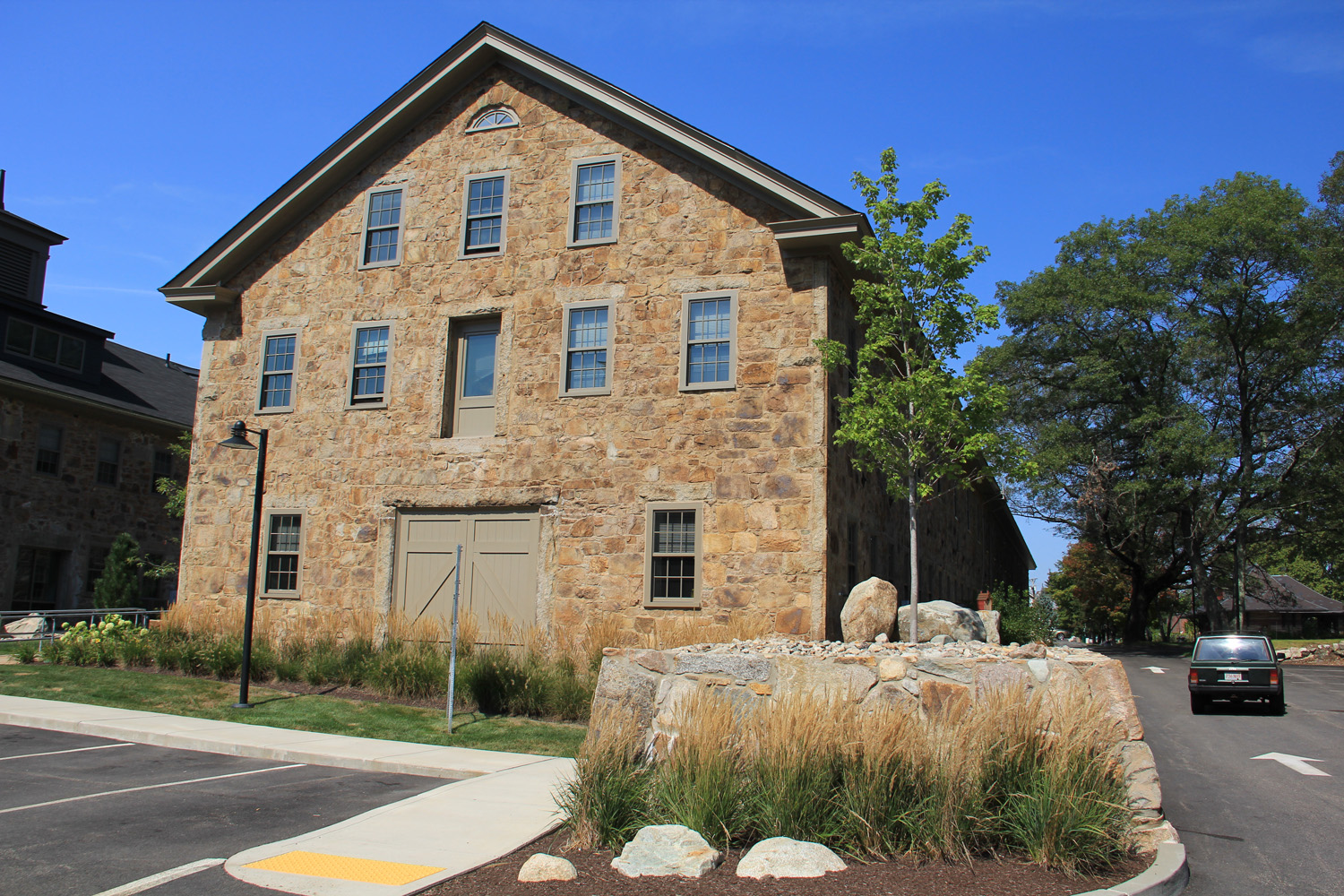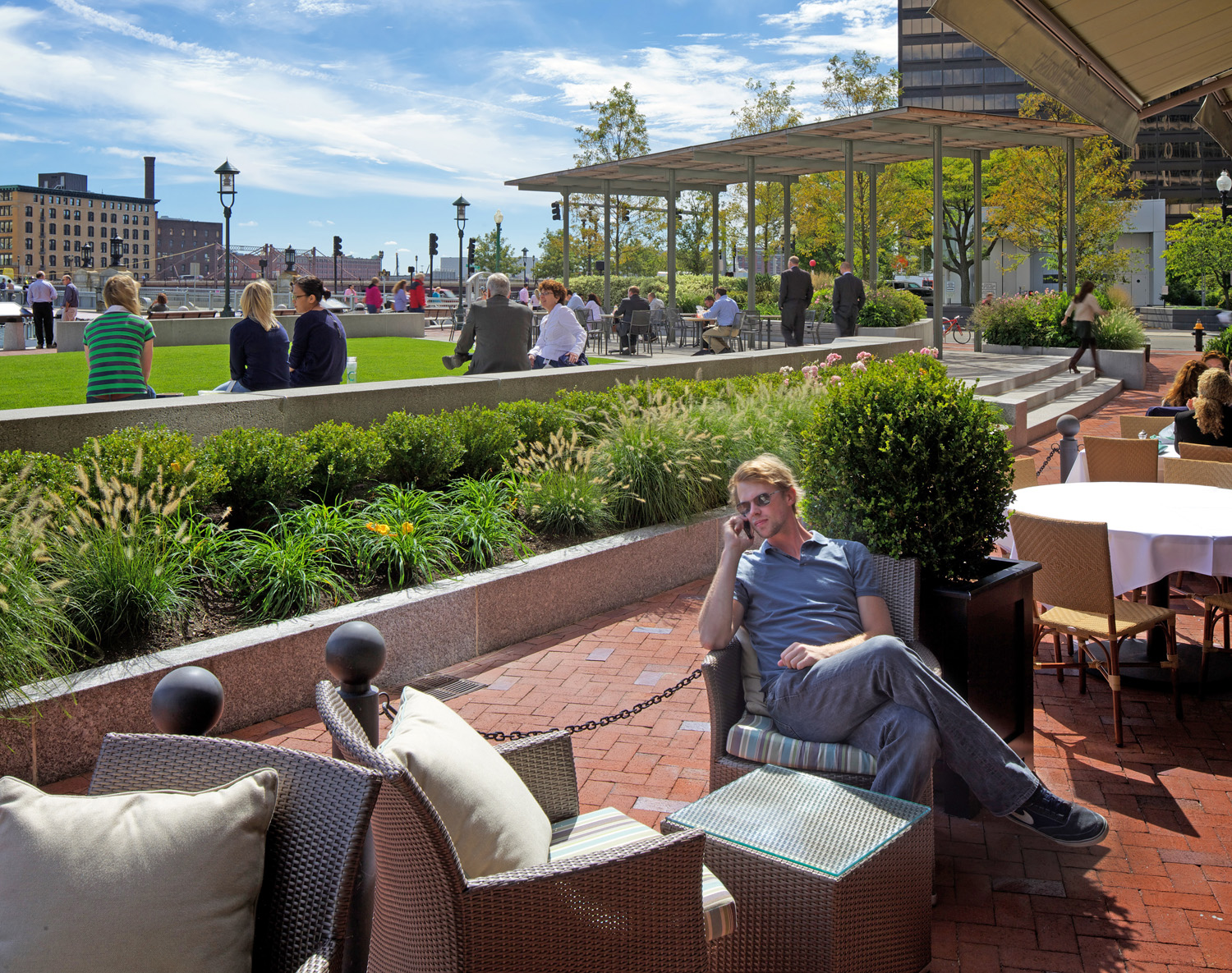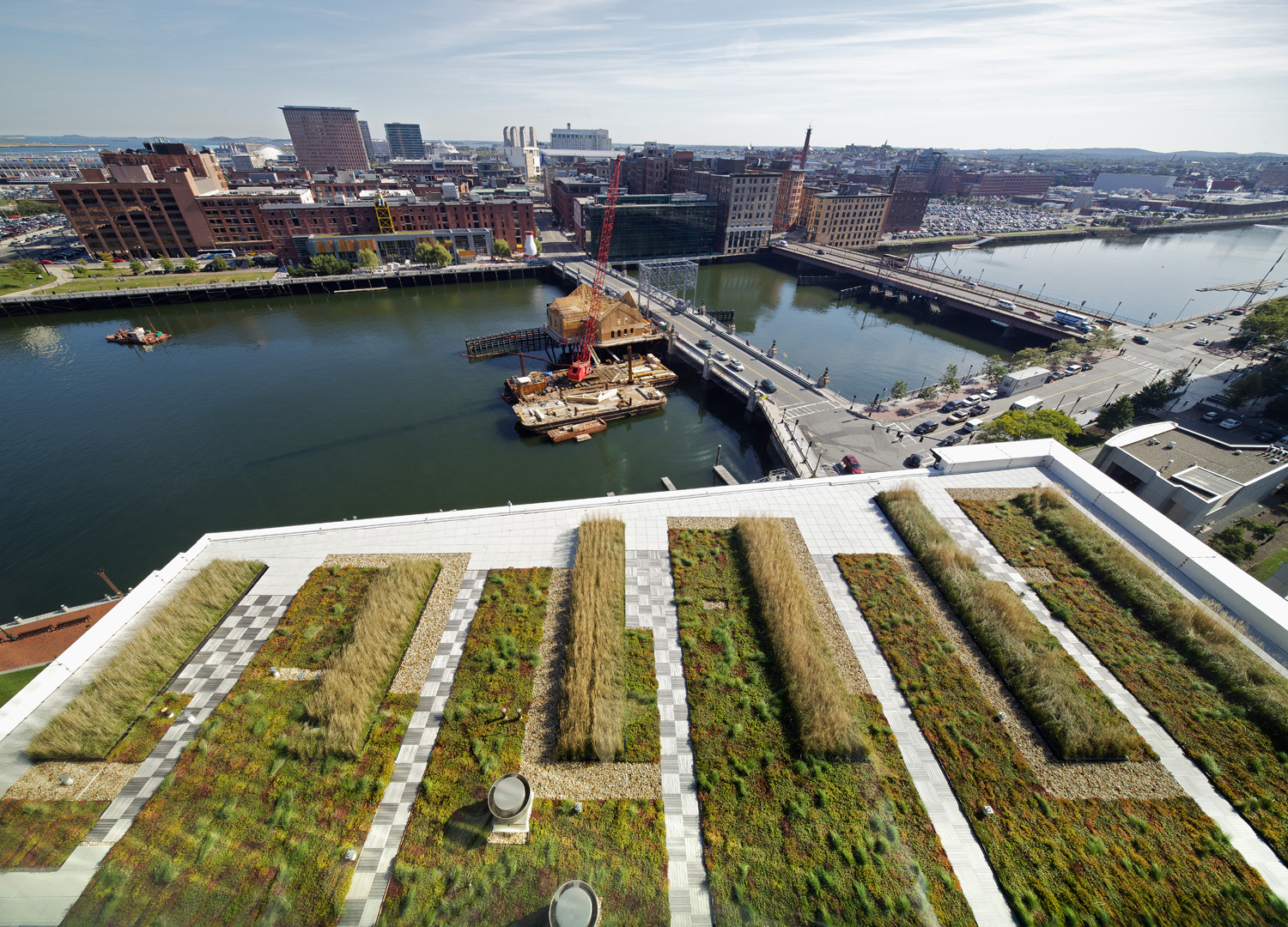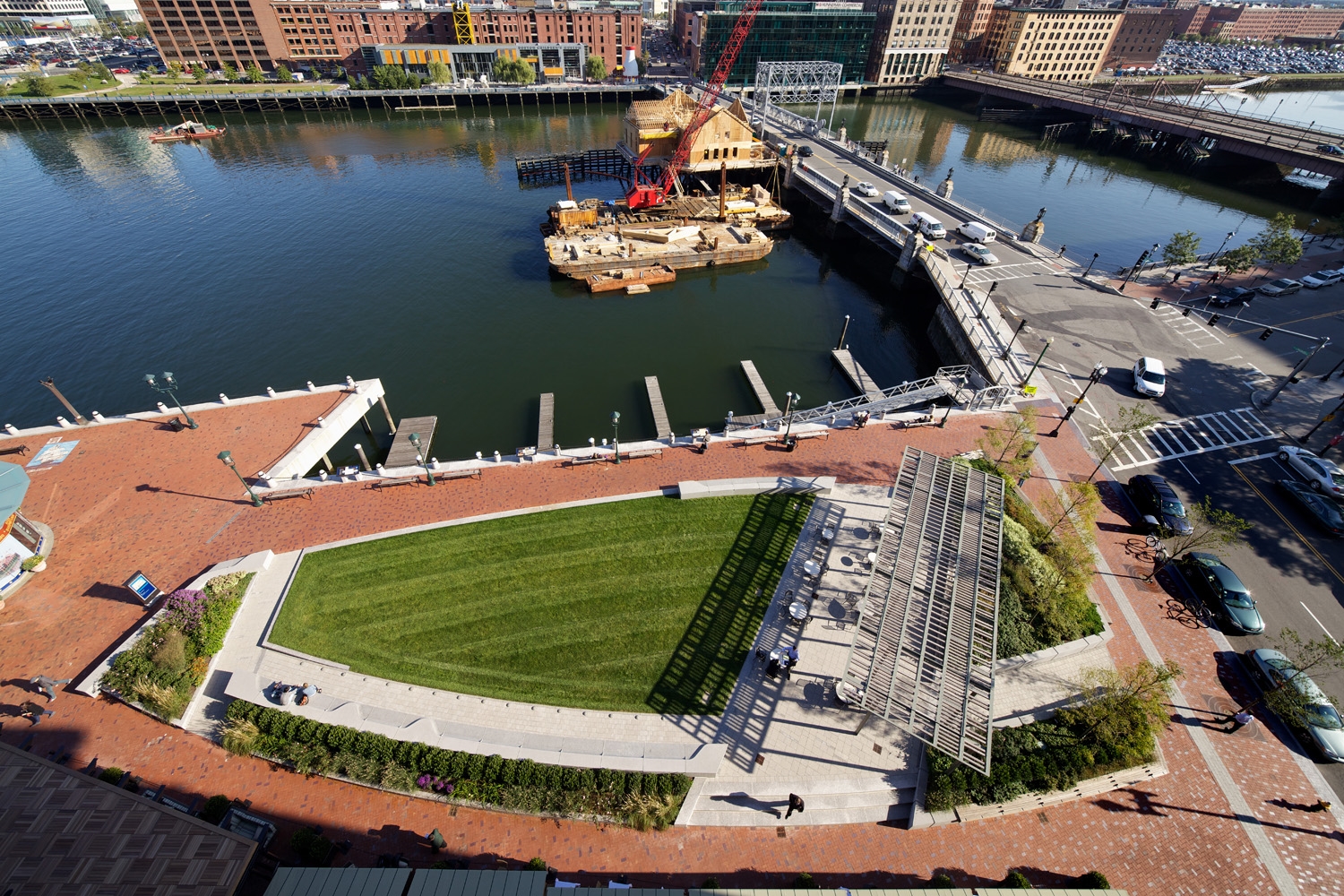The Boston Society of Landscape Architects has recognized two projects by Halvorson Design with 2016 Merit Awards for Design. We are honored that the BSLA has acknowldged the unique achievements of each project and their contributions to the urban fabric of Boston.
The Thea and James M. Stoneman Centennial Park at Brigham and Women's Hospital is celebrated for its design complexity and success at integrating the landscape with below-grade structures. The landscape design balances the multi-layered objectives of supporting open space program, improving accessibility and urban connections, and integrating the concerns of sustainability and structural limitations, resulting in an open, inviting landscape that contributes to the urban fabric of the Mission Hill community.
Atlantic Wharf demonstrates a high level of refinement in project details along with the accommodation of flexible outdoor program, including concerts, film screenings and interactive art displays. Incorporating historic architecture and LEED Platinum certified new construction, the project brings vibrant park activity directly to the waterfront and serves as a significant landmark along the Boston HarborWalk.
To learn more about these projects, please contact:
Thea and James M. Stoneman Centennial Park
Cynthia Smith, Principal-in-Charge | cynthia@halvorsondesign.com
Atlantic Wharf
Bob Uhlig, Principal-in-Charge | bobu@halvorsondesign.com














































